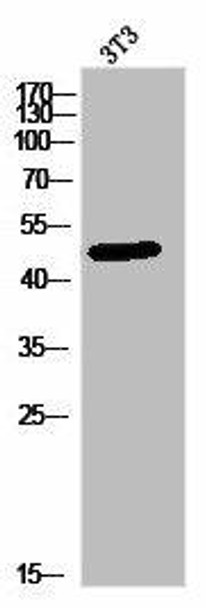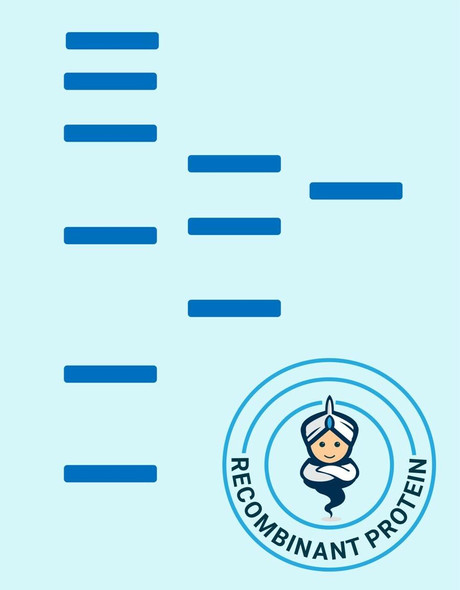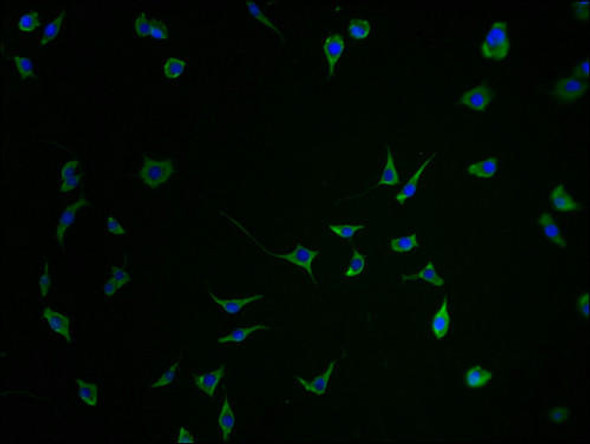Description
PLA1A Antibody (PACO02962)
The PLA1A Polyclonal Antibody (PACO02962) is a valuable tool for researchers studying the PLA1A protein, an enzyme involved in lipid metabolism and inflammation processes. Raised in rabbits, this antibody is highly specific for human samples and has been validated for use in Western blot applications. By targeting the PLA1A protein, this antibody allows for precise detection and analysis in various cell types, making it an essential resource for studies in lipid biology, inflammation, and related fields.PLA1A is a key player in lipid signaling pathways and has been implicated in various diseases, including metabolic disorders and inflammatory conditions.
Understanding the function and regulation of PLA1A is vital for deciphering its roles in health and disease, paving the way for potential therapeutic interventions targeting this enzyme. Researchers looking to investigate lipid metabolism, inflammation, or disease mechanisms will benefit greatly from using the PACO02962 antibody to explore the intricacies of the PLA1A protein.
| Antibody Name: | PLA1A Antibody |
| Antibody SKU: | PACO02962 |
| Size: | 50ug |
| Host Species: | Rabbit |
| Tested Applications: | ELISA, WB, IHC |
| Recommended Dilutions: | WB:1:500-1:2000, IHC:1:100-1:300 |
| Species Reactivity: | Human |
| Immunogen: | synthesized peptide derived from the C-terminal region of human PLA1A. |
| Form: | Liquid |
| Storage Buffer: | Liquid in PBS containing 50% glycerol, 0.5% BSA and 0.02% sodium azide. |
| Purification Method: | The antibody was affinity-purified from rabbit antiserum by affinity-chromatography using epitope-specific immunogen. |
| Clonality: | Polyclonal |
| Isotype: | IgG |
| Conjugate: | Non-conjugated |
| Synonyms: | PLA1A; NMD; PSPLA1; Phospholipase A1 member A; Phosphatidylserine-specific phospholipase A1; PS-PLA1 |
| UniProt Protein Function: | PLA1A: Hydrolyzes the ester bond at the sn-1 position of glycerophospholipids and produces 2-acyl lysophospholipids. Hydrolyzes phosphatidylserine (PS) in the form of liposomes and 1- acyl-2 lysophosphatidylserine (lyso-PS), but not triolein, phosphatidylcholine (PC), phosphatidylethanolamine (PE), phosphatidic acid (PA) or phosphatidylinositol (PI). Isoform 2 hydrolyzes lyso-PS but not PS. Hydrolysis of lyso-PS in peritoneal mast cells activated by receptors for IgE leads to stimulate histamine production. Belongs to the AB hydrolase superfamily. Lipase family. 3 isoforms of the human protein are produced by alternative splicing. |
| UniProt Protein Details: | Protein type:Secreted, signal peptide; EC 3.1.1.-; Secreted; Phospholipase Chromosomal Location of Human Ortholog: 3q13.13-q13.2 Cellular Component: acrosomal membrane Molecular Function:phospholipase A1 activity Biological Process: lipid catabolic process; lipid metabolic process; phosphatidylserine metabolic process |
| NCBI Summary: | The protein encoded by this gene is a phospholipase that hydrolyzes fatty acids at the sn-1 position of phosphatidylserine and 1-acyl-2-lysophosphatidylserine. This secreted protein hydrolyzes phosphatidylserine in liposomes. Three transcript variants encoding different isoforms have been found for this gene.[provided by RefSeq, May 2011] |
| UniProt Code: | Q53H76 |
| NCBI GenInfo Identifier: | 124015212 |
| NCBI Gene ID: | 51365 |
| NCBI Accession: | Q53H76.2 |
| UniProt Secondary Accession: | Q53H76,O95991, Q86WX6, Q9UPD2, B2R8V2, B4DXA2, |
| UniProt Related Accession: | Q53H76 |
| Molecular Weight: | 31,285 Da |
| NCBI Full Name: | Phospholipase A1 member A |
| NCBI Synonym Full Names: | phospholipase A1 member A |
| NCBI Official Symbol: | PLA1A |
| NCBI Official Synonym Symbols: | PSPLA1; PS-PLA1 |
| NCBI Protein Information: | phospholipase A1 member A |
| UniProt Protein Name: | Phospholipase A1 member A |
| UniProt Synonym Protein Names: | Phosphatidylserine-specific phospholipase A1; PS-PLA1 |
| Protein Family: | Phospholipase |
| UniProt Gene Name: | PLA1A |
| UniProt Entry Name: | PLA1A_HUMAN |











